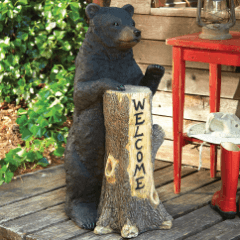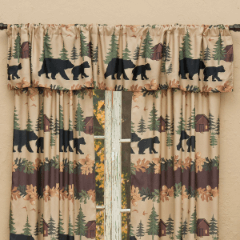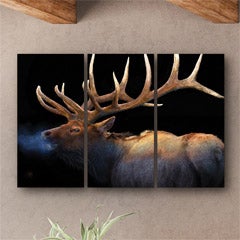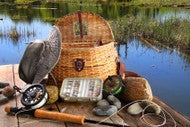Fly Fishing 101: A Beginner's Guide to Fly Fishing
May 14th 2019
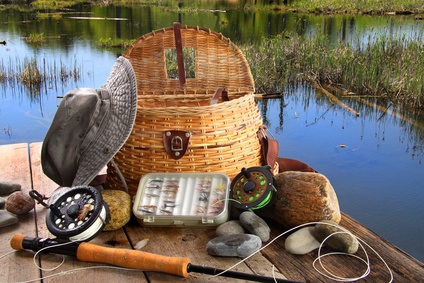 There's nothing else like it in the world. The way the river water flows between your legs. The way the cork feels in your palms. The whizzing sound of the line shooting through the guides. The anticipation as the fly lands on the water and you start to slowly strip the line. Then a small disturbance in the water as your fly disappears and your line goes taut. There's absolutely no other feeling like it in the world.
There's nothing else like it in the world. The way the river water flows between your legs. The way the cork feels in your palms. The whizzing sound of the line shooting through the guides. The anticipation as the fly lands on the water and you start to slowly strip the line. Then a small disturbance in the water as your fly disappears and your line goes taut. There's absolutely no other feeling like it in the world.
Fly fishing holds a special place in the hearts and minds of many anglers. It is one of the most intimate ways to enjoy and interact with nature. Where else can you literally immerse yourself in the environment of the very animal you are trying to catch? Where else can you do battle (yes, even a 5-pound cutthroat trout can put up a heck of a fight) with your quarry, separated only by a rod, some line and a span of water?
So how does one get started? Fly fishing is a skill usually passed on from parent to child or mentor to student, but not everyone is fortunate enough to have these personalized lessons from seasoned veterans. Fortunately, using a mix of old school and new school methods, even the uninitiated can acquire the know-how to get a line in the water and on some fish.
Getting the Lay of the Land... err Water
It may come as a surprise, but even with today's high-tech solutions at our disposal, one of the best ways to get information is by talking with people, face to face. You may not have a seasoned angler in your social circle but that shouldn't stop you from finding other anglers to talk to. Seek them out anywhere you can and be polite when asking for information. Usually, fishing shops are a good place to start, as are fishing aisles in sporting goods stores. Try to find the older folk, as these gurus of the rod may be more willing to part with some knowledge given you listen to a story or three.
Treat these fronts of knowledge with care and attention. Once you have established a good rapport, try teasing out specific information, such as what fish can be found in which rivers, when it is a good time to fish and what tackles are their favorite to catch trophy lunkers. Don't forget to thank them for sharing their secrets with you afterward, you never know when you need to ask them another question in the future.
Go Pro
As previously mentioned, a local tackle or pro shop is one of the best places to start. Look for a reputable shop online and read reviews. A good fishing shop is an institution in its own right and its patrons are more than happy to sing their praises if it is a quality outfitter. Fishing shops are not just an excellent source for data and information, but are essential to getting you the right tools to go out there and have some fun on the water, especially if you are brand new to fly fishing.
Your first conversation with a professional outfitter may seem like an interrogation. Do not be afraid of their questions, they are trying to help you as best they can and find you the right gear to suit your needs. Let them know up front that it is your first time buying fly fishing gear. Then be ready to answer their questions, which can (and should) include the following:
What kind of fish are you after? Rigs for saltwater and freshwater fish are slightly different; also, different fish respond to different lures or flies.
How big are the fish you are thinking of catching? The weight and size of your quarry usually determines the weight capacity of your rod, reel and line.
Will you be fishing from shore, wading or on a water craft? This usually determines the kind of accessories you may need like waders, nets or rod holders.
Listen intently to the suggestions and recommendations of the staff. They may suggest a combo package to get you started, and some lessons, as well. You may not need to buy every single thing they recommend, but at least you will know how to build your gear and tackle for the future. Just because you know where the fish are and have the gear to catch them, however, doesn't mean that you can just wade into the water and start hauling fish. Fly fishing is almost an art, indeed many fly anglers consider it an art form, and it requires technique.
Do Your Homework
Just knowing where the fish are doesn't catch you fish. Having the right gear doesn't catch you fish. Rather you must combine knowledge, tools and technique to land you that bull trout, sockeye salmon or bluegill. This is where you can use technology to aid you in acquiring and honing the skills you need. The Internet has hundreds upon hundreds of websites and references dedicated to fly fishing. From the literature in these sites, as well as videos from sources such as YouTube you can:
- learn all the knots you need from tying your backing to tying your fly;
- discover new casting techniques;
- keep abreast with the latest fishing season news and closures;
- and, much more.
Above all, practice what you have learned. Remember that practice does not make perfect. Practice makes permanent. No newbie has ever waded into the river and made a perfect cast on their first try. That said, everyone has the potential to cast consistently and accurately if they practice, practice, practice. Practice your knot tying as well, as you may be doing it in waist deep water or on a rocking canoe. Fly fishing is a skill and you must hone your craft constantly. If you do, your success on the water is sure to rise.

